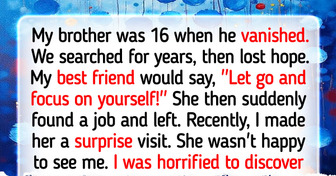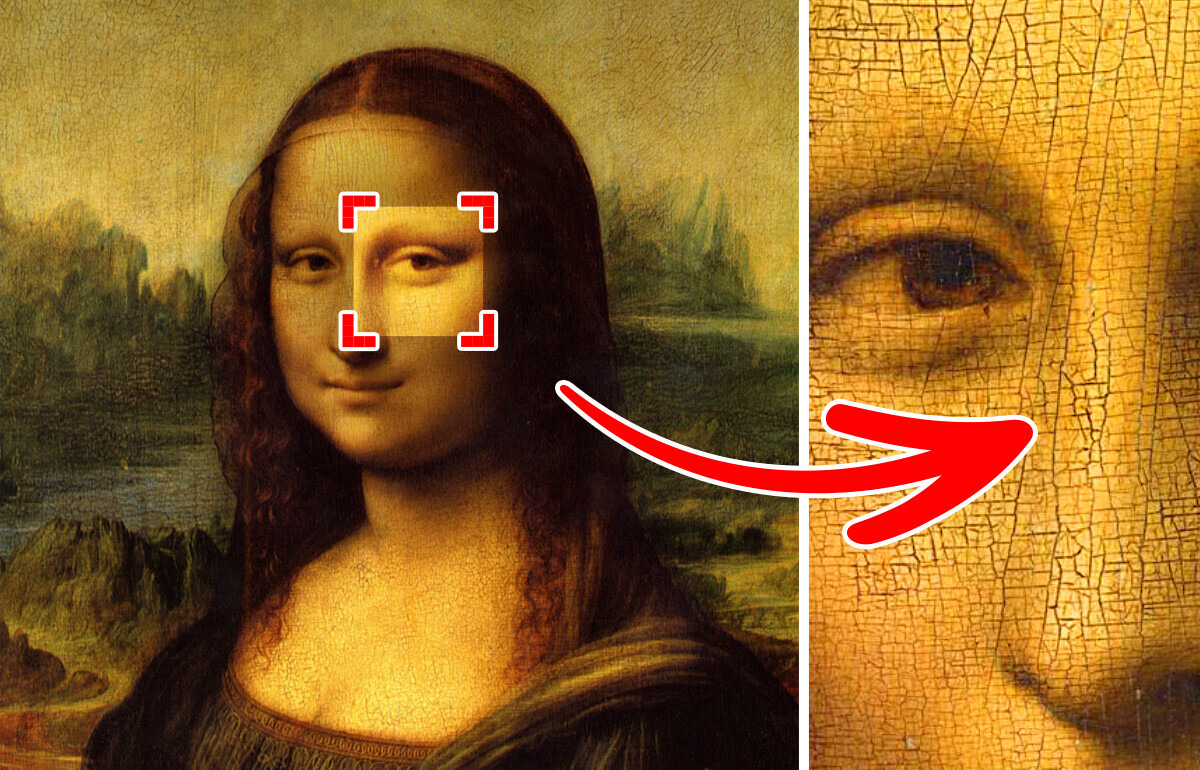10 True Stories So Disturbing, They Could Be Movie Plots


Throughout the history of art, great masters have captured not only beauty in their works, but also secrets. Some did it to dodge censorship, some to play with the viewer’s mind and some simply because, let’s face it, they were a bit eccentric. In this article, we invite you to don your detective’s magnifying glass because, behind those glorious brushstrokes and solemn faces, there is much more than meets the eye.
At first glance, the scene on the ceiling of the Sistine Chapel appears to depict the moment when God breathes life into Adam. However, if you look closely at the outline surrounding God and his angels, you will notice something surprising: it is shaped like a human brain! Researchers believe that Michelangelo, who was also an expert anatomist, hid this image as a bold statement: the divine spark lies within the human mind.
Leonardo da Vinci never did anything without considering a multitude of factors. In The Last Supper (1495–1498), the gestures, looks, and even the bread on the table have hidden meanings.
Some people claim that the figure to the right of Jesus is not John, but Mary Magdalene. Others claim that a musical score is hidden in the arrangement of the bread and hands. Is it a religious message, a secret code, or just Da Vinci being Da Vinci? Probably all three.
Although Van Gogh was not one to hide symbols in the Da Vinci style, there may be a divine nod in his Café Terrace at Night (1888). The arrangement of the figures is often seen as a reference to The Last Supper.
There is even a figure with long hair at the center of the group, and a cross in the window. Is this a coincidence or a subtle homage? Only Van Gogh knows for sure.
Botticelli hid philosophical and religious symbols behind the ethereal beauty of Venus. From the floating flowers to Venus’s impossible posture, everything seems to embody an idealized concept of purity. Some experts even argue that this work is filled with a wide variety of plants and flowers, each carrying its own symbolic significance.
For instance, myrtle appears, a plant traditionally linked to the goddess Venus. Primroses are also present—they’re classic symbols of spring and youth. Violets can be seen too, representing modesty and once used in the making of love potions. Additionally, the artwork includes cornflowers, irises, jasmines, poppies, and more.
During his Blue Period, Picasso painted a blind guitarist consumed by poverty. However, years later, X-rays revealed something disturbing: at least three human figures were hidden beneath the painting!
Faced with economic hardship, Picasso often reused canvases, but it is also believed that these “ghosts” represent his emotional state at the time.
At first glance, it appears to be an elegant 15th century portrait of a couple. However, if you look closely at the mirror in the background, you will see a special reflection of two people who are not in the main scene.
One of them could be Van Eyck himself. Above the mirror, the words “Johannes de Eyck fuit hic” are inscribed, which translates as “Johannes van Eyck was here” — essentially the first “I was here” in the history of art.
Is The Scream (1893) the ultimate expression of anguish? Did you know that someone wrote a message on top of the canvas? In very fine calligraphy, which is only visible with a magnifying glass, it reads: “Could only have been painted by a madman!”
For years, this was considered a tasteless joke, but recent studies have confirmed that it was written by Munch himself, probably as an ironic response to those who doubted his mental health.
At first glance, Gustav Klimt’s The Kiss (1907–1908) seems to be a straightforward romantic portrayal of a couple immersed in an atmosphere of golden love and sensuality. However, as is often the case with Klimt’s art, there is more to it than meets the eye.
The decorative pattern on the lovers’ clothing is not random: the man’s features are stiff, black, rectangular shapes, while the woman’s is adorned with spirals and flowers. Some interpret these as symbols of yin and yang, or male and female energy. Some also suggest that the work represents not only love, but also surrender and the merging of two souls, or even a final farewell.
This triptych is the medieval equivalent of a Björk music video. The central panel features giant fruits, impossible hybrids and bizarre scenes. Hidden in the panel from hell, however, is a curious character with a score written on his buttocks!
The internet quickly christened him “Bosch’s musical butt”, and someone even transcribed and played the tune.
As well as her mysterious smile, the Mona Lisa harbors secrets worthy of a thriller. In 2010, Italian experts discovered tiny letters in her eyes: “LV” in the right eye (Leonardo da Vinci, of course), and symbols that are still being debated in the left eye.
Some claim that the landscape behind her is a hidden map and that it is part of an encrypted message.
Although it looks like a typical Civil Guard scene, it is actually a composition full of clues. Rembrandt arranged the characters as if they were on a stage: the protagonists at the front and the supporting actors around them.
However, the most intriguing figure is barely visible behind the captain: a girl with a dead chicken hanging from her belt. It is thought to symbolize the end of the militia group portrayed. Or perhaps it’s simply Rembrandt’s way of making us scratch our heads for centuries.
At first glance, this 1551 painting appears to celebrate culinary abundance, with meats and dairy products on display in the foreground. However, a closer look at the background reveals a subtle scene of the Holy Family giving alms to the needy.
This juxtaposition of material opulence and spiritual humility offers a critique of greed and encourages us to appreciate what is truly important.
Every masterpiece has a second — or even a third — level of meaning waiting to be discovered. Was everything planned? Or were they just playful geniuses who were having more fun than we realized?
And if you’re fascinated by the hidden secrets of famous paintings, check out this article about film scenes inspired by renowned works of art — in the world of art, the hidden is often the most entertaining!











